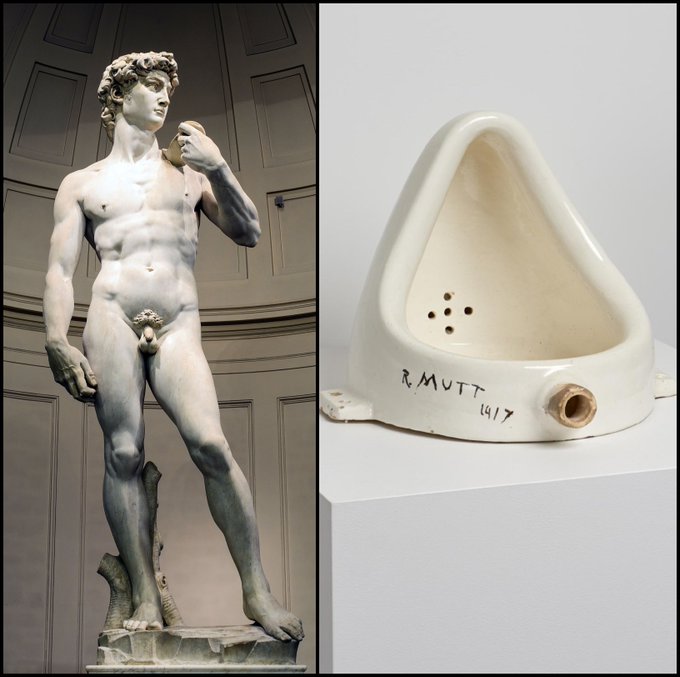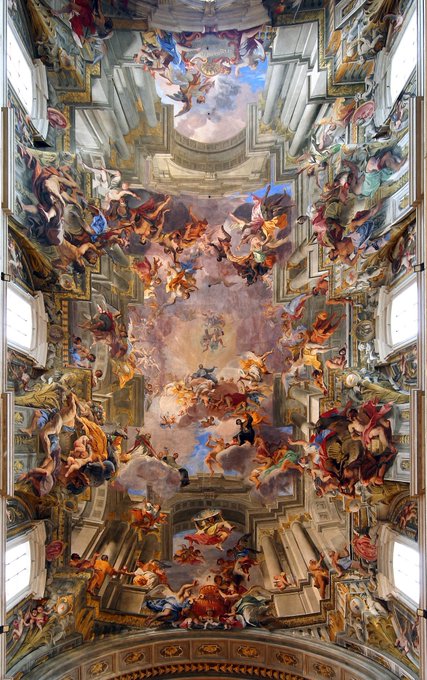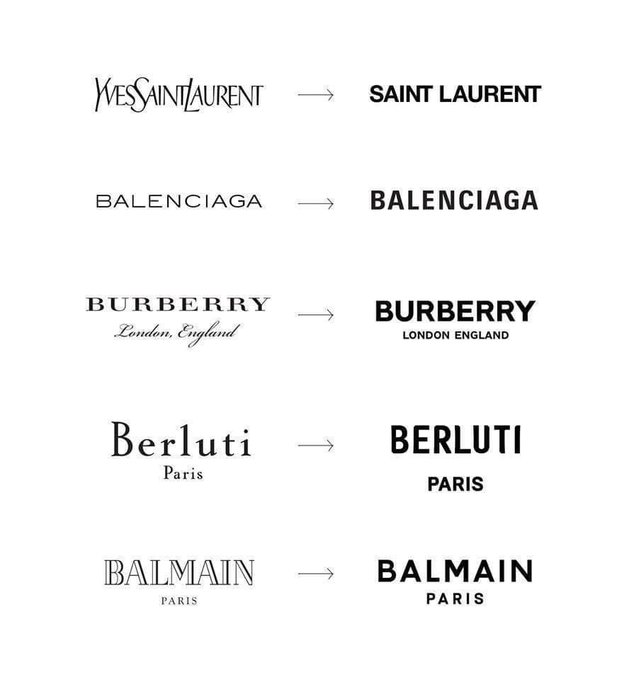Optimization eats the World - in defense of Uninhibited Creativity
/ 12 min read
With the rapid development of technology and the greater availability of the Internet, we started to gravitate towards something I would express as “the culture of efficiency”. We invest in innovation, optimize production lines, facilitate processes, and devise new strategies and tactics in order to increase the input-output ratio: deliver more using fewer resources.
Technology unrevealed seemingly unlimited possibilities by providing digital amplifiers of self-expression like social media, various platforms or services, and recently popularized AI-based tools like ChatGPT. We capitalize on all of them today by learning new things, socializing online with others, and making our ideas and content even more fruitful and viral.
As always, every expeditious change has its supporters and skeptics. The technological race, unlocking human potential augmented by tech, made some people romanticize the progressive and limitless future it may provide. On the other hand, because of many uncertainties and dangers, there are many heated discussions and opinions that antagonize today’s advances saying “We are not ready for that yet”. Whether we advocate the first or the second vision, as it was said by Kevin Kelly, ”[…] any efforts to try and stop it (technology) or outlaw it is going to fail because those things are inevitable at the large scale”. We cannot stop it, yet we still have choices and decisions to make regarding the shape and the character of what’s inevitable.
Maybe half a year ago I was watching the movie Ex Machina which is basically about an experiment with artificial intelligence in the lead role. Besides a pretty immersive story and ominous atmosphere (that I liked), a certain monologue of one of the characters stuck in my head:
“The challenge is not to act automatically. It’s to find an action that is not automatic. From painting, to breathing, to talking, to f*cking. To falling in love.” - Ex Machina
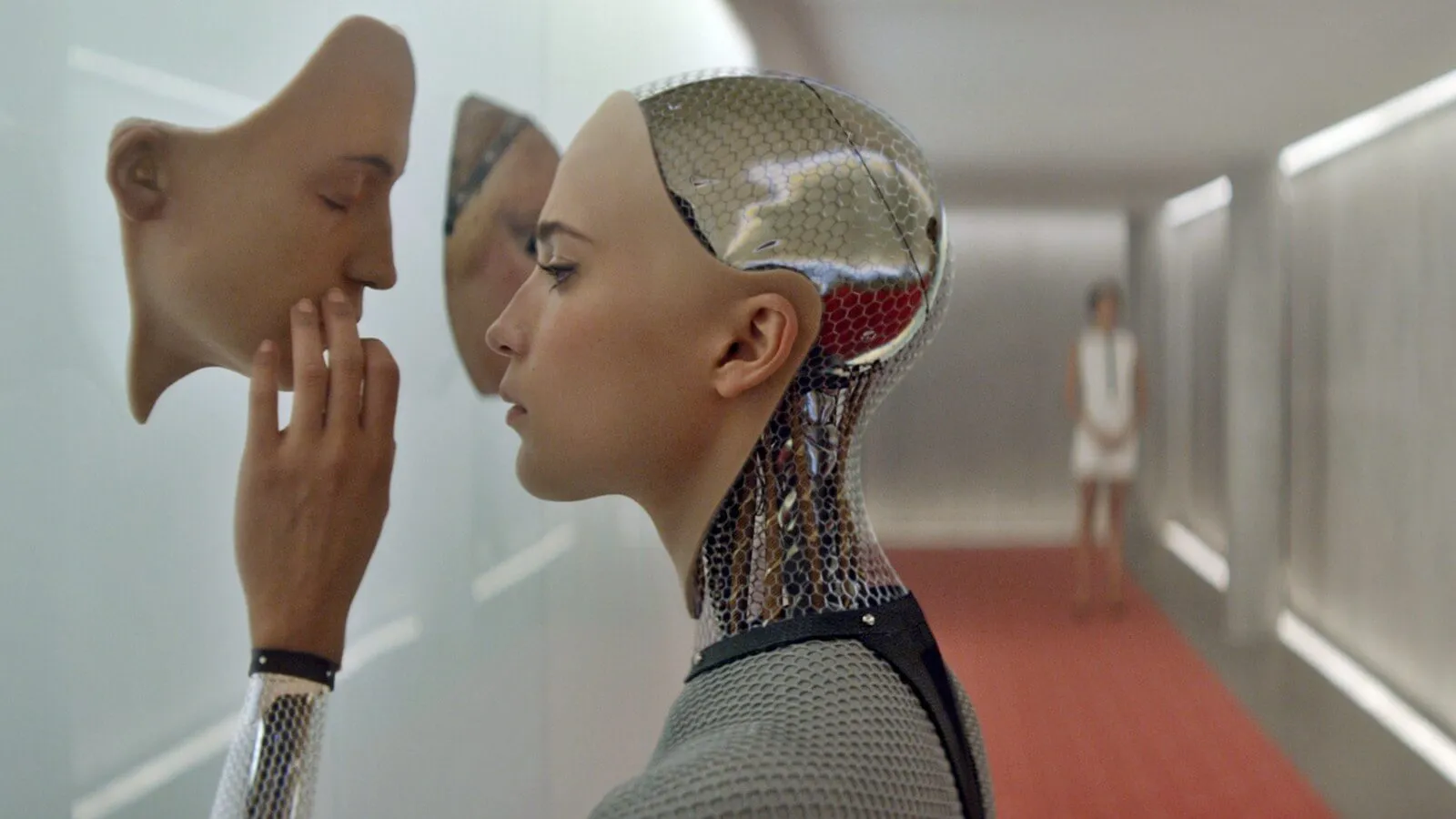 Ex Machina scene (source)
Ex Machina scene (source)
This may sound a bit mysterious; because what does it mean not to act automatically? And when and why we should not act that way?
Speaking of “the culture of efficiency”, not everything is worth optimizing, and not everything should be optimized at all.
”[…] we should not optimize everything. People by nature are totally inefficient. […] Everything that we really value as humans are terribly inefficient. […] efficiency and productivity are for robots and AI. Humans are about inefficiency - what we gonna value and cultivate.” - Kevin Kelly
We don’t want to optimize things like art, creativity, adventure, or feelings. “How many images we are able to paint in an hour?” or “How many places can we visit in one week?” are ridiculous questions we want neither to ask nor answer. It doesn’t mean that we shouldn’t optimize the possibilities of experiencing more or feeling deeper emotions, but it’s a completely different story.
The thing is that something had changed over the last decade. Today our world resembles the socio-economic machine where each cog is not good enough as long as it’s not profitable, efficient, popular, or presentable. Something regarded in the past as holding spiritual value, now must adapt and prove its usefulness.
As the consequential step, we may notice that carriers of emotions, products of creativity, and signs of our identity are starting to be eaten by optimization.
My art is more popular than yours
In 1917, the French painter, sculptor, and writer, Marcel Duchamp, created a sculpture named Fountain consisting of a porcelain urinal signed “R. Mutt”. To this day, this work is regarded by historians and theorists to be an important avant-garde landmark in the art of the 20th century.
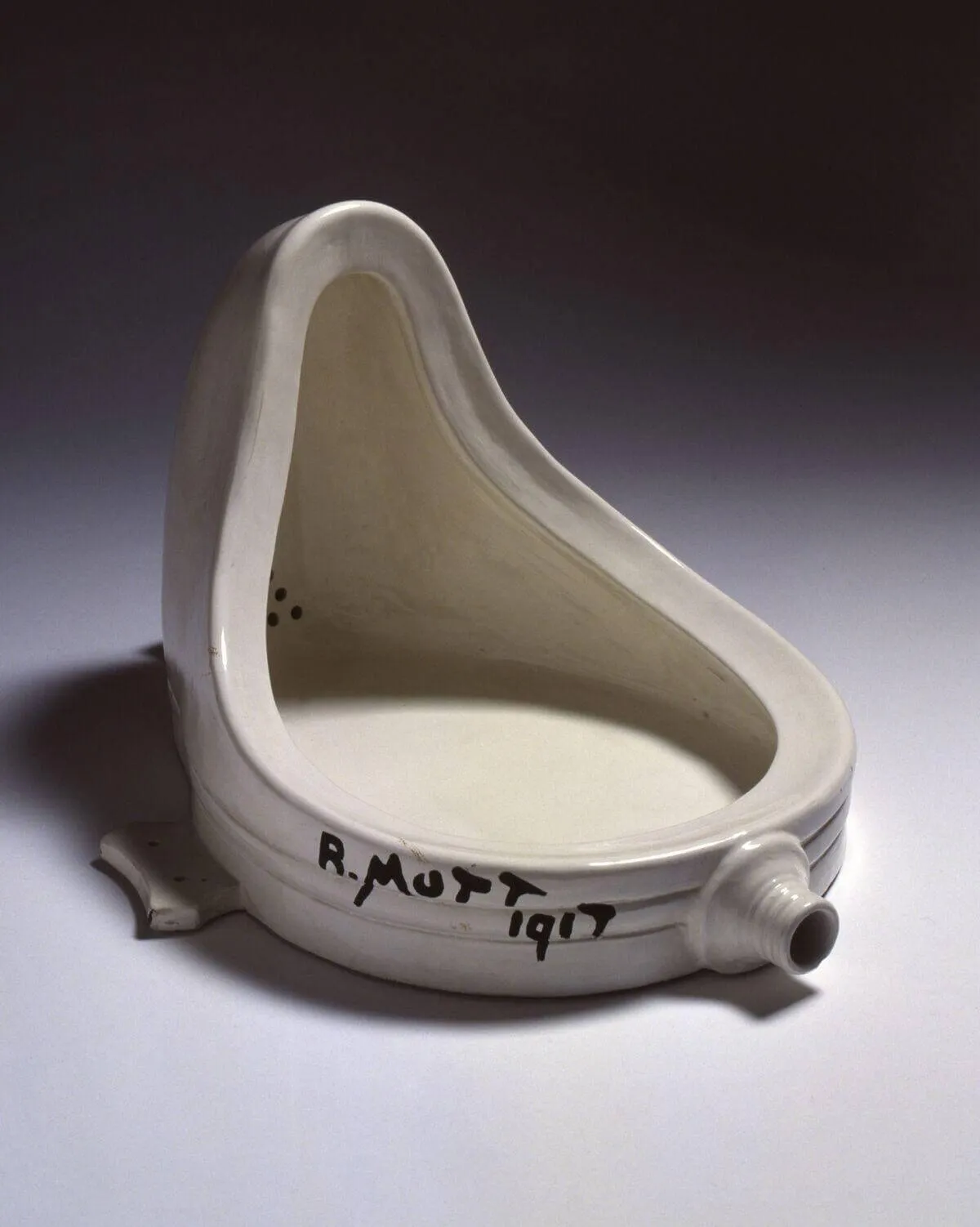 Fountain, Marcel Duchamp (source)
Fountain, Marcel Duchamp (source)
Duchamp’s main intention was to note the anti-art movement, assault modern artists, and undermine contemporary artistic standards.
This brings us to the matter of the definition and the purpose of today’s (modern) art. Because seemingly it’s no longer about expressing an artist’s emotions. It’s not about the admiration of talent or creativity. It seems that the art’s purpose is more related to postmodernism’s implication that everything is relative. “Art is everything that I regarded as art” - that’s the message.
Why did artists stop making art?
I sense a silent alliance between art and business; it’s not worthy to make art without considering instant-benefit-oriented values and self-promotion on the web. What people want to hear (buy) is as important (or even more important) as what I, as an artist, want to say (sell).
Let’s examine The Embrace sculpture for instance. Its purpose is to commemorate Martin Luther King Jr. and Coretta Scott King. Technically speaking, it represents four intertwined arms, imitating the hug they shared after MLK was awarded the Nobel Peace Prize in 1964.
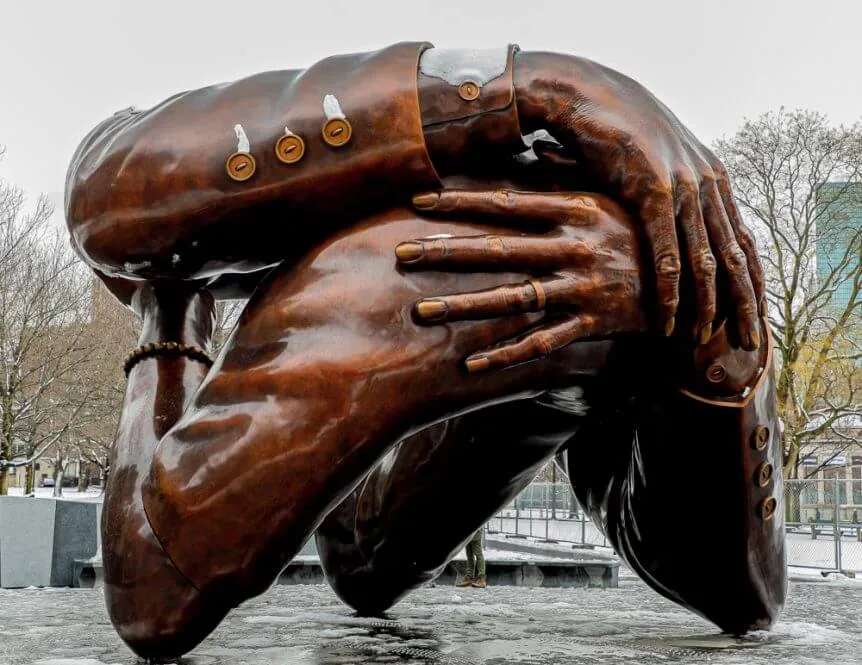 The Embrace (source)
The Embrace (source)
Behind the scenes, the creator’s motivation was Martin Luter King’s commitment to the philosophy of nonviolent resistance as a means for social change which he was supported by his wife.
The sculpture has received mostly negative responses from critics and the public for its controversial looking.
”There’s no question that most views of it look kind of strange. Only one angle really makes sense: it’s where the interlocking arms form the shape of a heart.” - The Problem With Boston’s MLK Memorial Isn’t That It Looks Like a Penis
Apparently, there are also other problems with this sculpture I believe, but here I would like to address a certain factor that in this case appeared as a line of defense.
Defenders argue that in order to appreciate this sculpture’s beauty and its figurative meaning, you have to understand the context; history, momentum, and philosophy of what happened. The problem is that beauty shouldn’t require you to understand the context. Art shouldn’t be contextualized and explained in order to be delightful. Imagine not being impressed by the medieval center of a European city without delving into gothic or renaissance architectural style. Or walking past the painting with indifference because you don’t internalize the assumptions of impressionism.
Typically for contemporary art, the main purpose is to shock. To gain popularity. To ignite a discussion about an artist’s vision that may fade into obscurity when people get bored. When the subject of art is controversial, attention-grabbing, or simply temporary, expect an army of shallow objects interesting for the first 10 minutes, but space-disfiguring for the rest of their existence.
I don’t want to be too critical and antagonize everything though. Because there are many different implications behind today’s state of art.
Dear artists, what is preventing you from painting like this?
Excellent skills require a work ethic and years of training while, unfortunately, artists also have to provide for themselves and make their art profitable in the same manner as tech companies produce their electronic devices or deliver digital services. In the past, many artists were supported by public organizations or aristocrats through patronage, making existence problems self-solving so that they would focus on creation.
Sadly, today we may expect investing in more tokenized “art creations” like NFTs rather than artists’ imagination and craftsmanship.
The domination of Pop Culture
In secondary school, I joined dance classes with two of my friends. Driven by curiosity and challenge, we found it fairly compelling just from the beginning. New people, different world views, and unprecedented music playing in the background were seemingly imperceptible forces that brought us to a different cultural environment. I cannot speak for my friends, but to me, it was influential enough to make me subconsciously question my trivial taste and premature cultural image of the world.
Accustomed to techno-based electronic and pop music so far, my ears were gradually starting to get used to more elaborate and less popular music types. Mainly, it was electro-swing, sophisticated/deep electronics, and variations of new wave. What’s vital here is the fact that I switched from what’s culturally recognizable to something out of the scheme that had a soul attached to it, making a contribution to my identity.
When I look back on those times, bands and songs that weren’t meant to be on the charts, I start to notice that genres and trends I admired so much 10 years ago were partially swallowed by Pop Culture. And it’s disturbing to me not only because it’s nothing I ever dreamed of, but because it’s a consequence of the natural process where bigger always outcompetes smaller.
As was cleverly pointed out in the article titled Pop Culture Has Become an Oligopoly, software and the Internet have made it easier than ever to produce and share content. Most of the random artists only managed to reach a niche audience, but a tiny proportion of creators were able to “hear” the crowd and gain popularity, making themselves really successful. Considering the invisible hand of the market in the form of the Network Effect, popular becomes even more popular, making the cultural market an oligopoly, with the winners-take-most trend.
With so many possibilities and choices to make, what’s most convenient and most familiar, goes viral, making Pop Culture the most pleasing stream.
”As options multiply, choosing gets harder. You can’t possibly evaluate everything, so you start relying on cues like “this movie has Tom Hanks in it” or “I liked Red Dead Redemption, so I’ll probably like Red Dead Redemption II,” which makes you less and less likely to pick something unfamiliar.” - Pop Culture Has Become an Oligopoly
Today, the process of creating and shipping unified and commoditized content to the market requires fewer art and imaginative skills and more marketing and tech skills (audio/visual side effects). Artistic virtues like taste or originality got universally bland, making more space for convenience and repetition. Roger Scruton, an English philosopher and writer who specialized in aesthetics, once said:
“Originality requires learning, hard work, the mastery of a medium, and most of all, the refined sensibility and openness to experience that have suffering and solitude as their normal cost.” - Roger Scruton
In the world of immediate gratitude, silence avoidance, and musical platitudes as the new normal, solitude and daily sensitivity are obviously difficult to preserve. Noise, be my king, Distraction, be my god.
It’s not that we lost the ability to create valuable and high-quality content though. There are still great music albums, videos, books, TV shows, and events making our life much more pleasant and alive. The problem is that diversity and variance have shrunk.
Culture is supposed to stand for various forms of expression, and embrace different worlds, stories, and feelings. Culture should turn different spots of our emotional image, making us feel happy, sometimes sad, and consistently making us think and question our beliefs. But it all won’t happen if we will be fed with sameness again and again.
Corporate Art Styles
If people may optimize art and culture for profitability, popularity, or simply for sparing people to make choices, an analogous story seems to happen with design.
In recent years, we have seen an explosion of flat, vector-based, brightly colored graphics and animations, often presenting disproportional and overoptimistic people. This style has been adopted mostly by businesses, corporations, and big tech companies like Google or Facebook (Meta). It’s called Corporate Memphis or Corporate Art Styles.
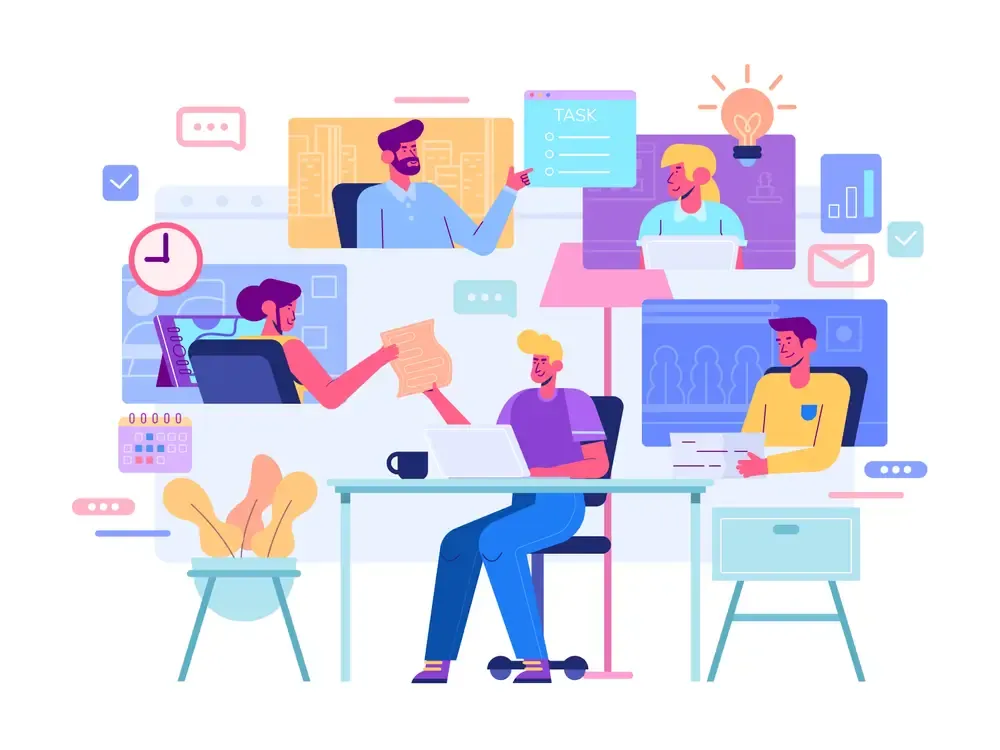 Corporate Art Style (source)
Corporate Art Style (source)
This style origins modernism and Art Deco Graphic Design that was also flat and was playing with geometry. Today’s Corporate Art Style seems like a natural progression of that.
It is met quite often with constructive criticism from the community mainly for its sameness, aggressive happiness, and pathetic humor. Those graphics are considered as annoying for their overoptimistic utopian flat aesthetic and omnipresence. They are literally everywhere: websites, advertisements, occasional magazines, policy updates, and user interfaces.
Designers found this flatness applicable in Logo Design as well. Paradoxically, what is supposed to stand for identity and recognition, becomes bland and unimaginative.
What's causing all these logos to look the same?
Important to realize, it doesn’t mean that every minimalistic and flat design refers to this over-generic and bland style. There are more visually interesting styles, for example, the more detailed and imaginative Art Deco mentioned above or the pretty popular YouTube channel, Kurzgesagt – In a Nutshell, that uses neat and packed with details animations, making it a completely different category. That’s capital M minimalism.
 A.M Cassandre’s Art Deco (source)
A.M Cassandre’s Art Deco (source)
Corporate Art Style, despite so many critics, is not badly designed though. It’s clear and readable, easily scalable and replaceable, inoffensive, effectively spreads a message, and makes websites and ads maximally approachable for clients.
The problem is that graphic design is not only about providing benefits. Obviously, it should solve problems and support the business’s vision. But if all we can do is an army of shallowly positive and almost copy-pasted artworks, homogenization will eventually take charge of everything, paradoxically making both creative work and creative process… uncreative.
”This is what happens when the creative dept is overrun by the marketing dept. Being data driven is the death of art.” - @cfcreative_
On August 20, 2011, The Wall Street Journal, was published a popular article emphasizing the transformation of many industries caused by the growth of technology, software, and the Internet. Because this phenomenon was so widely ranged, covering the entire globe, its author started with sentence “Software is eating the world”.
Observing the trends affecting art and creativity, I would paraphrase it into “Optimization is eating the World”. Not only because optimization and automation seem to be natural consequences of technology’s succession. But more importantly, and that’s what the essay was about, because things that not so long ago were supposed to be media of human self-expression, today are reduced more and more radically to means for business/career goals multipliers.
Personally, I am a big enthusiast of technology and progress. IMHO we can be proud of how far we have come as a civilization and how many amazing inventions we still have to discover with our effectiveness. But sometimes, instead of focusing on looking even further ahead, we should pause for a minute and think; in the maze of what seems progressive and inevitable, is there anything worth fighting for to remain untouched by optimization. Let art be art.
